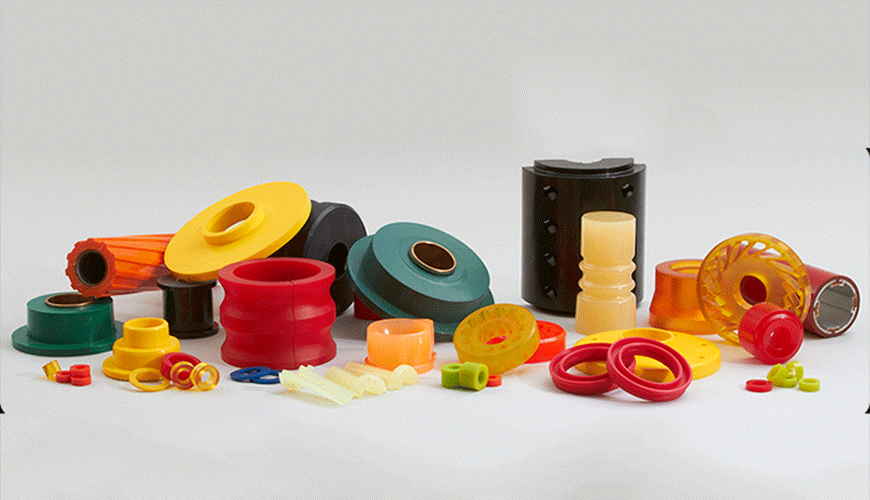

The ASTM D395 standard, published by the American Society for Testing and Materials (ASTM), is a common guideline for evaluating the tensile properties of dumbbell samples of vulcanized thermoset rubbers and thermoplastic elastomers. Method B covers procedures for evaluating the tensile properties of flat ring samples of vulcanized thermoset rubbers and thermoplastic elastomers. ASTM D412 covers two test methods, method A and B.

ASTM D412 Test Method A:
Method A for ASTM D412 is a common test for dog bone and strip samples of rubber and elastomers. The tensile stress, yield point, and tensile strength are based on the original cross-sectional area of a uniform cross-section of the sample. Measurement of the tensile set is made after a previously unstretched sample has been stretched and allowed to retract by a prescribed procedure.
Method A can be performed using a universal testing machine capable of constant elongation rate (CRE) control. Place your dumbbell-shaped specimen on the handles to determine tensile stress, tensile strength, and yield point. The clutch release rate should be 500 to 50 mm/min (20 to 2 inches/min). Start the machine and note the distance between the row marks. Record the force at elongation and at break specified for the test. The elongation measurement is preferably made using an extensometer.
ASTM D412 Test Method B:
Test Methods A and B of ASTM D412 specify a test machine with a minimum travel distance of 30 inches and a test speed of 500 mm/min (20 ipm). The D412 performs stress calculations as various elongation points and also performs multiple test situational analysis. Although ASTM D412 measures many different tensile properties, the most common are:
Tensile strength - the maximum tensile stress applied when a specimen is stretched to rupture.
Tensile stress at a given elongation – the stress required to stretch a uniform cross-section of a test specimen to a given elongation.
Ultimate elongation - elongation at which rupture occurs on application of continued tensile stress.
Stress set – the elongation remaining after a specimen has been stretched and allowed to retract in a certain way, expressed as a percentage of the original length.
Our organization also provides testing services within the scope of ASTM D412 tension test standard for rubber and elastomers, within the framework of laboratory testing services.
To get an appointment, to get more detailed information or to request an evaluation, you can ask us to fill in our form and reach you.